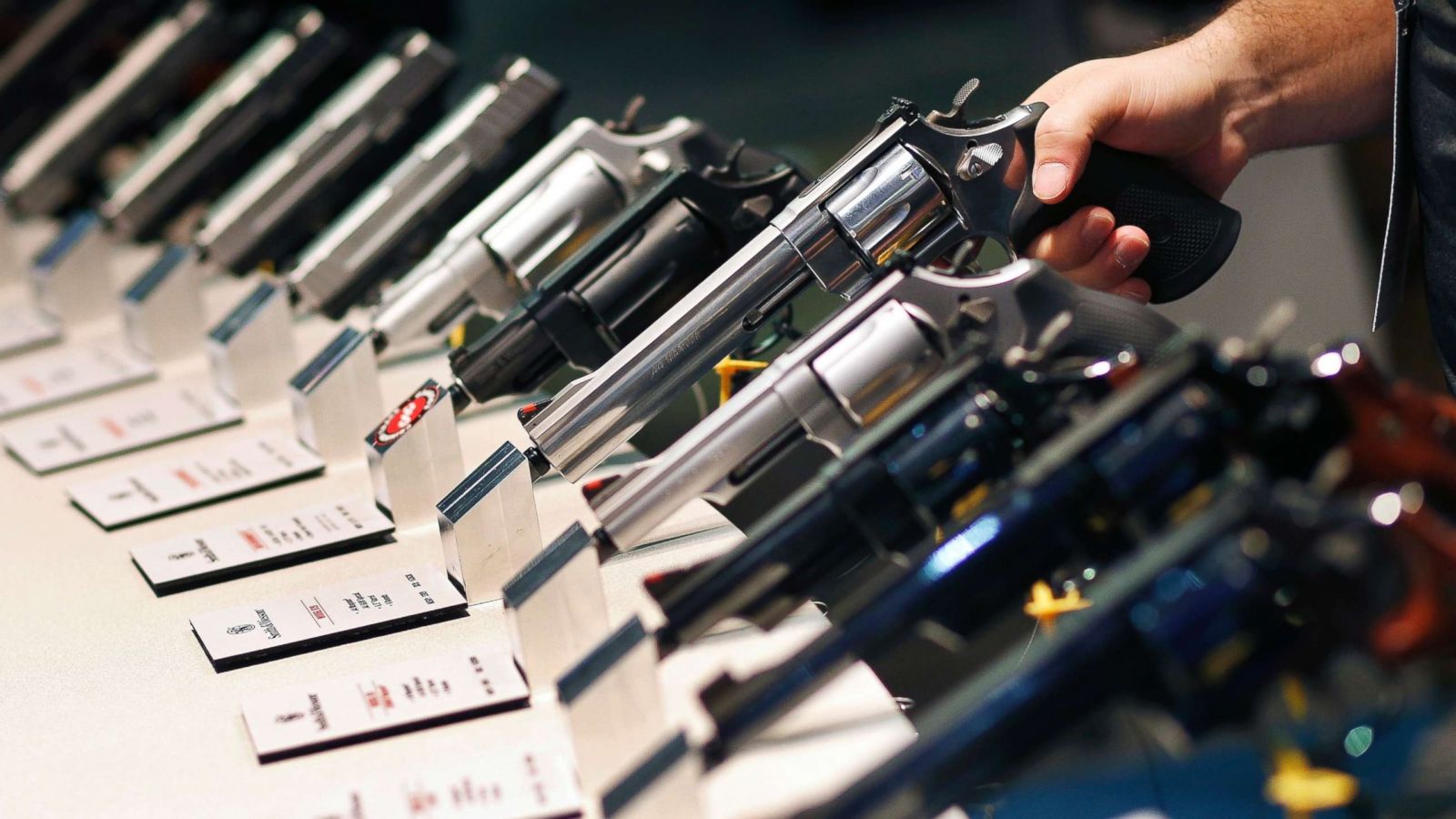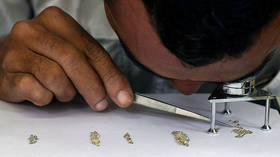Preparing for a Private Gun Transfer Ban
by James Wesley Rawles, Survival Blog:
 There is some bad news from the halls of the U.S. Congress: H.R. 8 has been introduced by Representative Mike Thompson–Democrat of California. Dubbed the Bipartisan Background Checks Act of 2019, this is horrible piece of legislation that is likely to become law! The word from the District of Criminals is that this Private Gun Transfer Ban bill is on the fast-track through committee, for passage. Ominously, it quickly gained 225 co-sponsors. And President Trump has given mixed messages about whether or not he would sign such a bill. Uh-oh!
There is some bad news from the halls of the U.S. Congress: H.R. 8 has been introduced by Representative Mike Thompson–Democrat of California. Dubbed the Bipartisan Background Checks Act of 2019, this is horrible piece of legislation that is likely to become law! The word from the District of Criminals is that this Private Gun Transfer Ban bill is on the fast-track through committee, for passage. Ominously, it quickly gained 225 co-sponsors. And President Trump has given mixed messages about whether or not he would sign such a bill. Uh-oh!
A PRIVATE TRANSFER BAN, BUT IT SOUNDS SO REASONABLE
The mass media is using soft-sounding phrases like “Universal Background Checks”, “Reasonable Step”, and “Closing the Gun Show Loophole”. But with H.R. 8 what we’d get is a Private Gun Transfer Ban with the tyranny of bureaucracy poking its nose into our gun closets. It would make it illegal to sell, give, or even lend a gun to a neighbor without Federal paperwork. And it would make gun shows as we now know them and newspaper ads for used guns quaint things of the past.
Most Americans have not considered the full implications of a nationwide private transfer ban. This would essentially end the privacy of firearms ownership. Nearly all transfers would have to go through an FFL, (for a fee) with an FBI background check. Whether it is a sale, a gift, a trade, or a loan, all gun transfers would have to be “papered” on a ATF Form 4473. The only exceptionswould be gifts (not sales) within an immediate family, and transfers of antique (pre-1899 manufactured) guns. All other transfers would require a background check and completion of a dreaded Form 4473!
THE COMING PRE-1899 BOOM
Since 1992, I have extolled investing in Federally-exempt pre-1899 guns. I wrote a FAQ on the subject that has been updated several times and that is widely cited and cross-posted. You should take the time to read it, but here is the most pertinent point: A December 31, 1898 threshold was set in stone, with passage of the U.S. Gun Control Act of 1968 (GCA-68). Per the Federal law, any guns made on or before December 31, 1898 are legally exempt “antiques”, but those made on or after January 1, 1899 are controlled “firearms.” While state and local laws often differ, under Federal law any antiques can be freely transferred across state lines with no paperwork required. But less than 1/2 of 1% of the guns in the United States are pre-1899 antiques.
I predict that if a nationwide private transfer ban is enacted, suddenly everyone would wake up to the significance of the scarce pre-1899 cartridge guns. There would then be a huge rush to by them. However, since there is such a tiny supply, prices will double with two years. And within five years, their prices will triple. I’m not kidding: I mean a genuine 300% gain. The law of supply and demand is inescapable. Those wishing privacy for cartridge gun purchases will only have one really viable option: Pre-1899 antiques. Buying anything else would require paperwork and an FBI background check.
START LOOKING FOR PRE-1899 CARTRIDGE GUNS!
I recommend that you attend a lot of gun shows this winter and spring, before enactment of the Private Gun Transfer Ban. Also watch GunBroker.com and GunAuction.com like a hawk. There, watch for auctions for any of following cartridge guns that are being sold as “No FFL antique”(Federally exempt) guns:
Colt Lightning Rifles, all large frame are pre-1899; Medium frame:
serial numbers below 84,000; Small frame: serial numbers below 35,334
Colt Single Action Army (SAA) and Bisley revolvers with serial numbers under 182,000. I consider SAAs with serials between 165,000 and 182,000 (1896 to 1898 production) the most desirable, since they have steel frames (and are thus safe to shoot most modern smokeless loads), yet they are Federally exempt.
Colt Model 1878 Double Action Frontier revolvers (serial numbers below 41,000)
Colt Model 1889 Navy .38, all are pre-1899
Colt “New Army” or “New Navy” .38 and .41 (serial # below 115,000)
Colt New Service, first year of production (1898) only. (Serial # below 250)
Fox (A.H. Fox) shotguns – all are modern
Hopkins and Allen Mfg. marked guns are ALL pre-1899 because the company changed its name (and rollmark) to Hopkins and Allen Arms in 1898.
Ithaca Baker Model shotguns – all are pre-1899
Ithaca Crass Model shotguns (serial # below 38,399)
Ithaca Hammer shotguns – other – (serial # below 33,011)
Ithaca Hammerless shotguns – other – (serial # below 32,988)
Marlin rifles–serial number groups not consecutive! The only models that ended production before 1899 are the Model 1881, 1888, Model 1889, and 1891. All others must have a serial number under 161,200. (Note: Marlin did not start a new block of serial numbers staring at 1, like most makers. Instead, their number were mixed. But the approximate # for those Marlins produced before the end of 1898 is 161,200.)
Marlin-Ballard rifles, all are pre-1899
Martini-Henry Rifles, all are pre-1899
Mauser M1896 “Broomhandle” pistols (serial # below 15,000–these were mostly made with “cone” (pyramidically step-sided) hammers or large ring hammers–are pre-1899.
Pre-1899 Mauser Bolt Action Rifles:
See the following listings by model year/country. Note that any Mauser marked “Ludwig Loewe” or “Loewe, Berlin” is pre-1899, because Loewe was merged into DWM in 1897):
M1889 Belgian, most rifles are pre-1899. However, most carbines made with Yatagan bayonet mounts are post 1899 and thus legally modern.
M1890 Turkish contract, all are pre-1899
M1891 Argentine contract rifles and carbines, all are pre-1899
M1891 Columbian contract (Argentine Pattern) most are pre-1899
M1891 Ecuadoran contract (Argentine Pattern) most are pre-1899
M1891 Peruvian contract, all are pre-1899
M1891/1892/1893 Spanish rifles, all are pre-1899
M1893/M1895 Spanish *carbines* –see date on receiver ring.
M1893 Turkish contract rifles, all are pre-1899 (Note: Many of there were re-barreled to 8 x57 Mauser at Ankara in the 1930s (and re-stamped on the receiver ring with their re-arsenalization year, but they are still legally “pre-1899” antiques.)
M1894 Brazilian contract, all are pre-1899
M1894 Swedish carbines–see date on receiver ring–Less than 40% are pre-1899
M1895 Bolivian contract (M1891 Argentine pattern) all are pre-1899
M1895 Chilean contract by Ludwig Loewe –all are pre-1899
M1895 Chilean contract by DWM–Many later examples are post-1899, However, it has been determined with certainty that early DWMs with A through K prefix serial numbers are
pre-1899. Special thanks to The Dutchman in Indiana for the first “in captivity” report on a K-prefix M1895 DWM that is cartouched 1898. Also thanks to Ed Albers, who spotted another, with serial number K7023. Since then, I found three others that were cartouched 1898, also with a K prefixes.
M1895 Chinese contract (Chilean Pattern)–all are 1899.
M1895 Costa Rican contract (Chilean Pattern) by Ludwig Loewe are
pre-1899 (DWMs with “L” or higher serial # prefix are not!)
M1895 El Salvadoran contract (Chilean pattern) by DWM. Most are
post-1899 except early production guns with three digit serial numbers.
M1895/96/97 Orange Free State contracts (Marked “O.V.S.” Some also have Chilean crests. These are original Boer war contract guns and quite sought after by collectors!) All are pre-1899.
M1895 Paraguayan contract (Chilean pattern) by DWM. Most are post-1899
M1895 Persian contract (Chilean Pattern) by Ludwig Loewe are pre-1899 (DWMs with “L” or higher serial # prefix are not!)
M1895 Peruvian contract (Chilean Pattern) by Ludwig Loewe are pre-1899 (DWMs with “L” or higher serial # prefix are not!)
M1895 Uruguayan contract (Chilean Pattern) by Ludwig Loewe are pre-1899 (DWMs with “L” or higher serial # prefix are not!)
M1896 Swedish rifles –see date on receiver ring–only about 1% are pre-1899, since 1899 was the first year of full production on this model Mauser, Oberndorf, and 1898 was the first production year at Carl Gustafs Stads Gevarsfaktori.
Merwin Hulbert revolvers, all are pre-1899
Mosin-Nagant rifles–see date marked UNDER the rear tang, near the action screw. You have to take off the wood to see it. The date that one first sees on top is actually on the rear of the BARREL, not on the receiver itself. Many of these receivers were made pre-1899. Even a lot of the “later” Finnish M-91/30s and Model 39s (with barrel dates in the 1940s) have receiver tangs dated in the 1890s! Note: Some of the tang dates are two digits, such as 95 (for 1895) or 9^6 for 1896–with a vertical arrow between the digits.) Thanks to Dennis Kroh of Empire Armsfor this information!
Loading...


